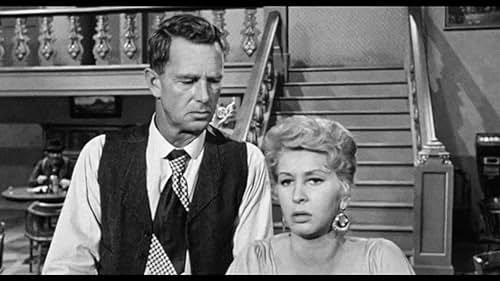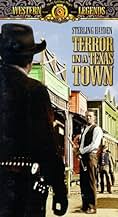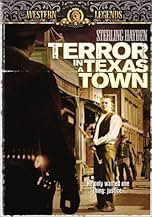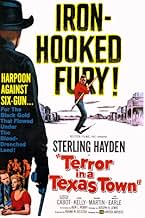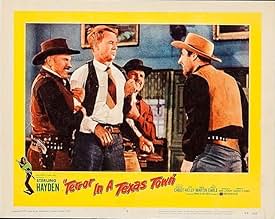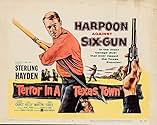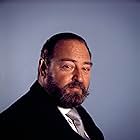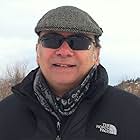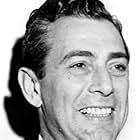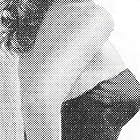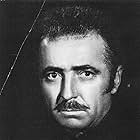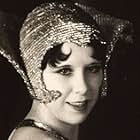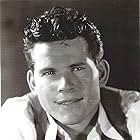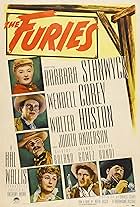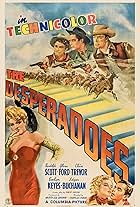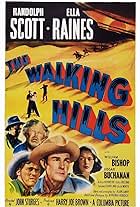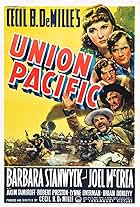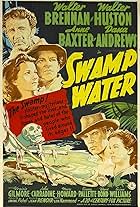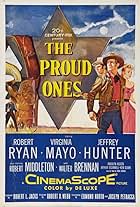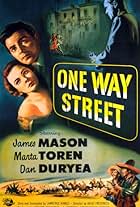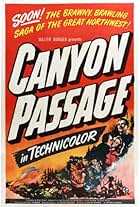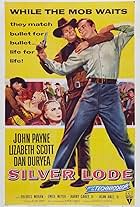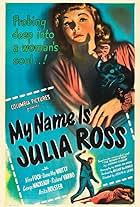IMDb RATING
6.8/10
2.5K
YOUR RATING
A Swedish whaler is out for revenge when he finds out that a greedy oil man murdered his father for their land.A Swedish whaler is out for revenge when he finds out that a greedy oil man murdered his father for their land.A Swedish whaler is out for revenge when he finds out that a greedy oil man murdered his father for their land.
Eugene Mazzola
- Pepe
- (as Eugene Martin)
Nedrick Young
- Crale
- (as Ned Young)
John Breen
- Townsman
- (uncredited)
Charles Fogel
- Townsman
- (uncredited)
Byron Foulger
- The Minister
- (uncredited)
Herman Hack
- Townsman
- (uncredited)
Marjorie Kane
- Townswoman
- (uncredited)
Fred Kohler Jr.
- Weed
- (uncredited)
Richard LaMarr
- Townsman
- (uncredited)
Patricia Marlowe
- Townsman
- (uncredited)
Thomas Martin
- Townsman in Church
- (uncredited)
- Director
- Writers
- All cast & crew
- Production, box office & more at IMDbPro
Storyline
Did you know
- TriviaThis was the final feature film for cult director Joseph H. Lewis. He would spend much of the next decade directing television episodes before retiring from the industry. His other work includes: My Name Is Julia Ross (1945), a terse little thriller about a case of mistaken identity, Gun Crazy (1950), a variation on the Bonnie and Clyde story told with gripping narrative skill, and the astonishing film noir thriller, The Big Combo (1955), which is as raw and edgy as any gangster thriller made that decade - all ingenious efforts that prove Lewis was one of the great low-budget stylists of his era.
- GoofsJohnny stands at his hotel room window looking down on Hansen who appears to be walking directly to the front of the hotel yet there's six shots of him striding down the street while Johnny takes his time going down to the bar and having a drink before going outside to find Hansen just approaching.
- Quotes
Brady: I don't think you've the guts right now to admit that this fellow McNeil had me burned down.
Deacon Matt Holmes: Oh, take it easy Brady.
Brady: Take it easy, Matt, what are you talking about take it easy? Didn't we agree to stick together? Well I stuck. Whose house got burned down? Mine! Whose barn went up in smoke? Mine! Whose livestock burned up? Mine!
- ConnectionsReferenced in Judd for the Defense: Tempest in a Texas Town (1967)
Featured review
While the eye-catching poster promises "Iron Hooked Fury!" and pitting a harpoon against a six-gun, the curiously forgotten B-movie western Terror in a Texas Town, directed by Joseph H. Lewis, is a positively downbeat little movie. Starting with a handsome, square- jawed hero walking into battle with a clad-in-black gunslinger, it appears at first glance that we are on familiar ground. But the film then flashes back, and all the western tropes we had been expecting are subtly subverted, similar in many ways to Nicholas Ray's groundbreaking masterpiece Johnny Guitar four years previous. The screenwriter is credited as Ben Perry - a name you'll likely be unfamiliar with. Yet this was in fact a front for Dalton Trumbo, the great Oscar-winning writer who was then under scrutiny from Senator McCarthy and blacklisted from Hollywood. With this knowledge, the oddness of Terror in a Texas Town suddenly makes sense.
In the - you guessed it - small Texas town of Prairie City, the hard-working farmers earning little from their land are struggling to fight off the advances of the unscrupulous land baron McNeil (Sebastian Cabot), who is using his wealth and influence to buy up the whole area for reasons not immediately clear. Some of the townsfolk are playing hard-ball, refusing to give their homes and livelihood to a man they never see. So McNeil brings in tough-as- nails gunslinger Johnny Crale (an outstanding Nedrick Young), a broken career-criminal who is happy to caress his pistol whenever a deal doesn't go his way. He murders Swede Sven Hansen (Ted Stanhope) when he refuses to sign a contract. A day later, his sailor son George (Sterling Hayden) arrives to greet the father he hasn't seen in over a decade, only the learn of his murder and that the land left to him is now the property of a greedy businessman.
It quickly becomes clear that the hero-versus-villain showdown the opening scene promised us will be nothing like we expected. The dashing American hero is in fact an immigrant without the skills of a quick-draw or the wits to take on McNeil on his own, and the black leather-donning Crale may just be in the midst of developing a conscience after years of killing and the loss of his gun hand. What makes Terror in a Texas Town so interesting is the way it merely hints at the two central characters' personalities and past, leaving these could-be archetypes as intriguing enigmas. Trumbo makes a point of highlighting the ranchers' ignorance of McNeil's Machiavellian role in the events, choosing instead to focus their hatred on the muscle. It isn't difficult to imagine that Trumbo's exile and unforgivable treatment at the hands of his own country didn't influence this apparently off-the-conveyor-belt B-picture. It has been unfairly forgotten by the decades, but Terror in a Texas Town is ripe for re-discovery as one of the strangest and most compelling westerns American has ever produced.
In the - you guessed it - small Texas town of Prairie City, the hard-working farmers earning little from their land are struggling to fight off the advances of the unscrupulous land baron McNeil (Sebastian Cabot), who is using his wealth and influence to buy up the whole area for reasons not immediately clear. Some of the townsfolk are playing hard-ball, refusing to give their homes and livelihood to a man they never see. So McNeil brings in tough-as- nails gunslinger Johnny Crale (an outstanding Nedrick Young), a broken career-criminal who is happy to caress his pistol whenever a deal doesn't go his way. He murders Swede Sven Hansen (Ted Stanhope) when he refuses to sign a contract. A day later, his sailor son George (Sterling Hayden) arrives to greet the father he hasn't seen in over a decade, only the learn of his murder and that the land left to him is now the property of a greedy businessman.
It quickly becomes clear that the hero-versus-villain showdown the opening scene promised us will be nothing like we expected. The dashing American hero is in fact an immigrant without the skills of a quick-draw or the wits to take on McNeil on his own, and the black leather-donning Crale may just be in the midst of developing a conscience after years of killing and the loss of his gun hand. What makes Terror in a Texas Town so interesting is the way it merely hints at the two central characters' personalities and past, leaving these could-be archetypes as intriguing enigmas. Trumbo makes a point of highlighting the ranchers' ignorance of McNeil's Machiavellian role in the events, choosing instead to focus their hatred on the muscle. It isn't difficult to imagine that Trumbo's exile and unforgivable treatment at the hands of his own country didn't influence this apparently off-the-conveyor-belt B-picture. It has been unfairly forgotten by the decades, but Terror in a Texas Town is ripe for re-discovery as one of the strangest and most compelling westerns American has ever produced.
- tomgillespie2002
- Sep 18, 2017
- Permalink
- How long is Terror in a Texas Town?Powered by Alexa
Details
Box office
- Budget
- $80,000 (estimated)
- Runtime1 hour 20 minutes
- Color
- Aspect ratio
- 1.85 : 1
Contribute to this page
Suggest an edit or add missing content

Top Gap
By what name was Terror in a Texas Town (1958) officially released in India in English?
Answer
